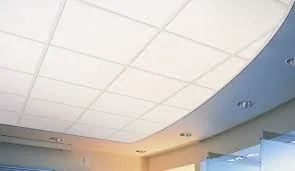Dec . 01, 2024 10:06 Back to list
Innovative Designs for Suspended Ceiling Access Hatches in Modern Architecture
Understanding Suspended Ceiling Hatches An Essential Component for Modern Interiors
In contemporary architecture and interior design, suspended ceilings—also known as drop ceilings—play a vital role in both aesthetics and functionality. One essential component of suspended ceilings is the ceiling hatch, which often goes unnoticed but serves several important purposes. This article delves into the significance of suspended ceiling hatches, their various types, installation processes, and benefits.
What is a Suspended Ceiling Hatch?
A suspended ceiling hatch is a removable panel integrated into a suspended ceiling system. It provides access to the space above the ceiling tiles, which often houses important infrastructure, such as electrical wiring, plumbing, and HVAC systems. The hatch's design allows it to blend seamlessly with the surrounding ceiling, preserving the aesthetic integrity of the space while ensuring practical accessibility.
Types of Suspended Ceiling Hatches
There are several types of suspended ceiling hatches, each designed to cater to specific needs
1. Standard Access Hatches These are the most common types and are typically made from materials like metal or plastic. They offer basic access and are available in various sizes to fit different ceiling grids.
2. Fire-Rated Hatches In commercial and industrial environments, fire safety is paramount. Fire-rated hatches are designed to withstand high temperatures and are made of materials that comply with fire safety regulations. They are essential for ensuring safe egress in case of emergencies.
3. Acoustic Hatches These hatches are designed to minimize sound transmission between spaces. They are particularly beneficial in office buildings, theaters, and other venues where sound control is crucial. Acoustic hatches are constructed with special materials that dampen noise.
4. Security Hatches For areas requiring restricted access, security hatches can be installed. These come with locking mechanisms and are often utilized in environments like banks, data centers, and other sensitive facilities.
Installation Process
The installation of a suspended ceiling hatch involves several steps, ensuring it fits well and functions effectively. The general process includes
1. Planning Determining the location of the hatch is essential. It should be positioned where access is most needed without disrupting the overall design of the ceiling.
suspended ceiling hatch

2. Measuring and Cutting Accurate measurements are crucial. The installer must measure the grid dimensions and cut the necessary ceiling tiles to accommodate the hatch.
3. Installing the Frame The hatch frame is then installed into the ceiling grid. This frame must be secured adequately to support the weight and ensure stability.
4. Fitting the Hatch The final step involves inserting the hatch into its frame. It should be flush with the surrounding tiles, allowing for easy access while maintaining a seamless appearance.
5. Testing Once installed, the hatch is tested to ensure it opens and closes smoothly, providing unobstructed access to the ceiling space.
Benefits of Suspended Ceiling Hatches
The inclusion of suspended ceiling hatches in a building offers numerous advantages
- Accessibility Ceiling hatches provide quick access to essential infrastructure, allowing for routine maintenance and emergency repairs without the need to disrupt the entire ceiling system.
- Aesthetic Appeal A well-designed ceiling hatch blends into the ceiling, contributing to the overall appearance of the space. This is particularly important in commercial settings where first impressions count.
- Regulatory Compliance In many jurisdictions, building codes require easy access to hidden systems for safety and maintenance reasons. Suspended ceiling hatches help meet these regulatory requirements.
- Improved Safety By offering accessible points for maintenance work, hatches reduce the need for unsafe practices, such as climbing on furniture or using ladders.
- Cost-Effective Maintenance Regular access to infrastructure can save money in the long run by allowing for preventive maintenance and minimizing costly repairs.
Conclusion
Suspended ceiling hatches are an often-overlooked but essential component of modern building design. By providing essential access to maintenance areas while maintaining aesthetic continuity, they contribute significantly to both functionality and safety in various environments. As architects and interior designers continue to innovate, the importance of these hatches in creating efficient and attractive spaces will undoubtedly grow. Whether in residential, commercial, or industrial settings, understanding the significance of suspended ceiling hatches is crucial for effective design and maintenance planning.
-
Quality Ceiling Trap Doors & Access Panels | Easy & Secure AccessNewsAug.30,2025
-
Durable Ceiling T Grid Systems | Easy InstallationNewsAug.29,2025
-
PVC Gypsum Ceiling: Durable, Laminated Tiles for Modern SpacesNewsAug.28,2025
-
Pvc Gypsum Ceiling Is DurableNewsAug.21,2025
-
Mineral Fiber Board Is DurableNewsAug.21,2025
-
Ceiling Tile Clip Reusable DesignNewsAug.21,2025







